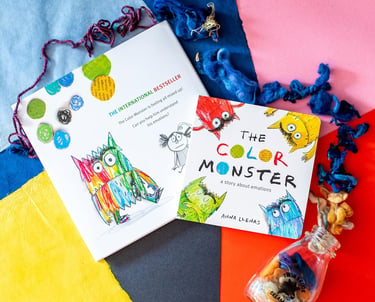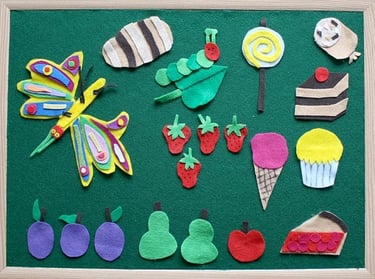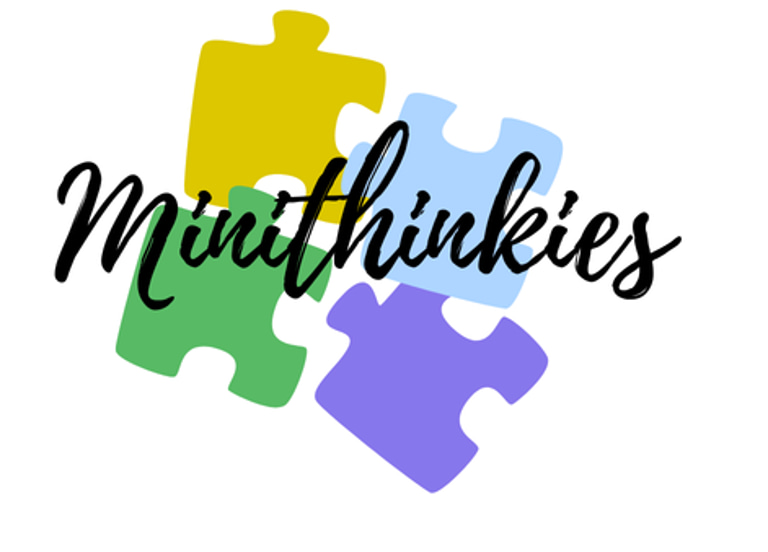Storytelling
The Color Monster: A Story About Emotions


Developmental Domain Benefits
Cognitive: The story invites children to identify and categorise emotions (happy, sad, calm, angry) using colour as a metaphor. This supports metacognitive thinking: “How am I feeling? Why?”
Language & Communication: As you read aloud and talk about each emotion colour, children hear new vocabulary (“confused,” “overwhelmed,” “calm”), helping develop emotional literacy and the ability to express how they feel.
Social-Emotional: Central to this book is helping children recognize their emotions, separating them out rather than being overwhelmed. This fosters self-awareness, regulation, and empathic understanding of others’ feelings.
Physical (Indirectly): Though not a physically active toy, reading together involves eye contact, pointing, turning pages, and gestures. All subtle fine-motor and attention skills.
Decision & Self-Control: The story models how the little girl helps the monster choose jars for feelings, offering a concrete metaphor for sorting emotions and making choices, an important executive-function skill.
Age - Appropriate
This picture book is perfect for children around ages 4–8 years old (kindergarten through early elementary), when they are ready to put names on their feelings and learn that it’s normal to have many emotions at once.
Parent-Child Bonding: A Shared Emotional Journey
Reading this story together opens a doorway for meaningful conversation. Sit close, look at the monster’s colours and ask: “Which feeling would you put in the red jar? Why?” Pause, listen. Smile. Reflect.Each shared page becomes more than read-aloud time, it becomes a co-created space of trust, where your child learns that their feelings matter, and you are present to help untangle them. This kind of emotional connection strengthens your bond and teaches your child that being understood is powerful.
Velcro Board Storytelling: Bringing Imagination to Life


Developmental Domain Benefits
Language Development:
As kids narrate their stories, they practice new words, sentence structure, and expressive communication. Even simple phrases like “the bear goes home” build confidence in early language skills.
Cognitive Growth:
Sequencing and problem-solving come naturally through storytelling. Children learn cause and effect , what happens first, next, and last , while strengthening memory and focus.
Social and Emotional Learning:
When storytelling happens with friends, siblings, or parents, it becomes a shared experience. Kids learn empathy by taking on different characters’ feelings, helping them understand emotions in a safe, creative way.
Fine Motor Skills:
Attaching and moving Velcro pieces supports hand-eye coordination and finger strength , perfect for developing the muscles needed for writing later on.
Age - Appropriate
Best for ages 2 to 6 years, this activity grows with your child.
Ages 2–3: Children enjoy naming characters, matching pictures, and exploring textures.
Ages 4–6: Preschoolers and kindergardners begin sequencing stories, describing emotions, and building their own imaginative plots.
Parent-Child Bonding:
Parents can join in, helping narrate or encouraging their child’s ideas. These moments of connection build trust, spark laughter, and make learning feel like love in action.
Velcro board storytelling is more than a fun craft . it’s an imaginative doorway into language, empathy, and creativity. A simple board, a few characters, and endless stories to tell.
